107dB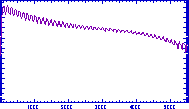
5500Hz
|
1. Harmonics and Spectra
(a) Complex waves can be mathematically analysed as being composed of different sine waves (Fourier analysis). Vibrating objects don't usually vibrate at a single frequency, they have harmonics.
(b) According to when each harmonic starts, the different elements of a complex wave can be in different phase relations (N.B. the human ear is not thought to be sensitive to phase relations).
(c) Very important: any complex wave can be analysed into the periodic
elements of different frequencies of which it is composed. Result: the
spectrum
of sound. For example, the following spectrum is of the waveform produced
at the glottis in a vowel. Note the series of peaks or harmonics,
occurring
at integer multiples of the fundamental frequency f0.
107dB
5500Hz
|
(Click on the graph to hear an imitation of the sound that
comes out of the larynx.)
(d) Non-periodic sounds are more adequately represented not by line spectra but by a continuous spectrum.
100dB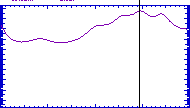
8000Hz
|
100dB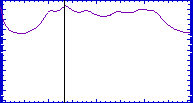
8000Hz
|
(a) Natural frequencies and resonance - different objects more or less tuned to specific frequencies - can act as filters.
Filters have centre frequency and bandwidth - the range
of
frequencies passed by filter not more than 3dB down on its maximum
amplitude. The bandwidth of a filter may be relatively narrow or
broad.
3. Source + Filter theory: Vowel Sounds
(a) The vocal tract acts as a complex variable filter. Into this is input a signal from the glottal source (for voiced sounds). Fig 1 shows a glottal source wave for a vowel, i.e. a complex wave with numerous harmonics which rapidly decrease in amplitude as frequency increases (12 dB/octave).
(b) Vowel sounds seen as product of glottal source and variable filtering
effect of supraglottal tract. So, the same vowels have the same gross
spectral shape, irrespective of the fundamental frequency f0 of the source.
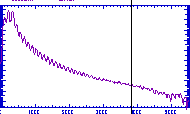
Fig. 1 filtered once ... |
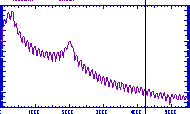
filtered twice ... |
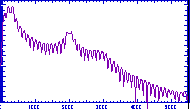
and filtered 3 times |